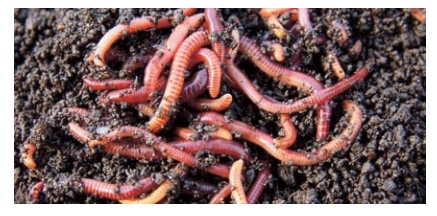Chapter: 9th Science : Environmental Science
Adaptations of animals to Habitat, Temperature and Light
Adaptations
of animals to Habitat, Temperature and Light
Animals can adapt themselves
according to their habitat. Temperature and light are forms of energy which
influence various stages of life activities such as growth, metabolism,
reproduction, movement, distribution and behaviour. Animals develop special
features or behaviour patterns to escape from extreme conditions of temperature
and light. In this context, let us study the adaptive features of bat and
earthworm.
1. Adaptations of Bat
Bats are the only
mammals that can fly. Mostly, bats live in caves. Caves provide them protection
during the day from most predators and the temperature here is very stable.
Apart from caves, bats also live in trees, hollowed logs and rock crevices.
They are extremely important to humans as they reduce insect population and
help to pollinate plants. Here, we will see the adaptations of bat in relation
to their habitat.
Nocturnality
Bats are active at
night. This is a useful adaptation for them, as flight requires a lot of energy
during day. Their thin, black wing membrane (Patagium) may cause excessive heat
absorption during the day. This may lead to dehydration.
Flight adaptation
Bat wings are entirely
different from those of birds or insects. Modified forelimbs serve as wings.
The bones in the wings of bats are elongated fingers and are connected by the
flaps of skin on either side of the body known as Patagia. Tail supports and
controls movements during flight. Muscles are well developed and highly
powerful and achieve in beating of wings. Tendons of hind limbs provide a tight
grasp when the animals are suspended upside down at rest.
Hibernation
Hibernation is a state
of inactivity in which the body temperature drops with a lowered metabolic rate
during winter. Bats are warm blooded animals but unlike other mammals, they let
their internal temperature reduce when they are resting. They go to a state of
decreased activity to conserve energy.
Echolocation
Bats are not blind. But
to fly around and hunt for insects in the dark, they use a remarkable
high-frequency system called echolocation. Bats give out high-frequency sounds
(ultrasonic sounds). These sounds are reflected back from its prey and
perceived by the ear. Bats use these echoes to locate and identify the prey.

2. Adaptations of Earthworm
An earthworm is a
segmented worm which belongs to Phylum Annelida. It is commonly found living in
soil, feeding on live and dead organic matter. The faecal wastes are called
worm castings (Vermicasts) which are rich in nitrogenous content adding
fertility to the soil. Earthworm plays a large role in keeping soil health
facilitating aeration, water infiltration and producing organic matter to
increase crop growth. Some of the adaptations of earthworm are explained below.
Stream-lined body
The earthworm has a
cylindrical, elongated and segmented body. This helps them to live in narrow
burrows underground and for easy penetration into the soil.
Skin
Mucus covers the skin
which does not allow soil particles to stick to it. The slippery skin is kept
moist as it respires through the skin. Moist skin helps in oxygenation of
blood.
Burrowing
Its body is flexible
having circular and longitudinal muscles which help in movement and subsoil
burrowing. Each segment on the lower surface of the body has number of bristles
called setae. They help the earthworm to move through the soil and provide
anchor in the burrows.
Aestivation
When the soil becomes
too hot or dry, earthworms become inactive and undergo a process called
aestivation. Earthworm moves deeper into the soil. It secretes mucus and lowers
their metabolic rate in order to reduce water loss. They remain dormant until
conditions become favourable. They come out of their burrow during rainy
season. The ideal temperature range is 60-80oF. The ability to tolerate
temperature depends on the surrounding moisture in the environment.
Nocturnality
Earthworms are sensitive
to light. It has no eyes but can sense light through light sensitive cells
(Photo-receptors) present in their skin. They give the skin the capacity to
detect light and changes in light intensity. They react negatively to bright
light (Photophobic). It remains in its burrow during the day to avoid light.


Related Topics